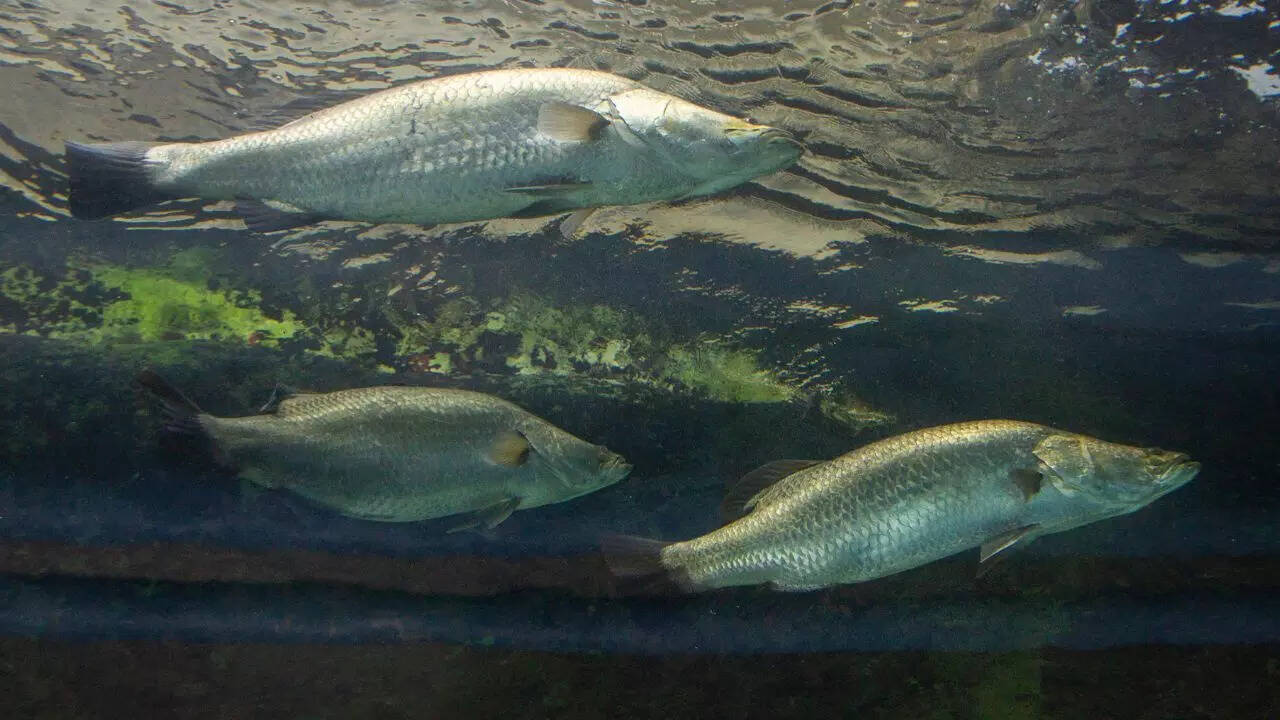ARTICLE AD BOX

Barramundi fish, native to northern Australia, possess a unique ability to change sex from male to female as they mature, a phenomenon known as protandrous sequential hermaphroditism. Research indicates that the timing of this sex change is closely linked to size rather than age; faster-growing fish transition earlier, becoming larger, more productive females that contribute significantly to the species' reproduction.
Nature never fails to surprise us with its unexpected surprises, be it the changing colours of a chameleon, or the complex migration patterns of birds - these extraordinary abilities of the world seem almost magical.
One such unique traitor lies beneath the surface of waters, in the form of a fish capable of changing its sex as it grows. Well, this might seem nearly impossible to even think of, but it is no joke!

Barramundi fish
Sex changing magicians of the waters!
The barramundi species of fish, native to the tropical waters of northern Australia, is well-known for its unique ability to change sex as it matures. This phenomenon, found in several fish species, is particularly notable in barramundi, which are “protandrous” sequential hermaphrodites.
This means they begin life as males but can transition into females as they grow. This outstanding characteristic has baffled scientists for years and recently, new research has shed light on how barramundi decide when to make this transition.

Barramundi fish
What does the research say
According to research by Brien Roberts, a PhD candidate at Charles Darwin University (CDU), the timing of sex-switching in barramundi is more closely related to size rather than age.
Barramundi that grow faster tend to switch sex at a younger age, meaning they spend more of their life as females, which are the larger, more productive sex. This is important because larger female barramundi produce more eggs and contribute more significantly to the future of the species.
Roberts' study, which analysed the growth rings in the ear bones of fish, shows that faster-growing fish reach the size threshold needed for sex change earlier than their slower-growing counterparts.
The special change
These fish are born in estuaries, where they begin life as male and as they grow, they experience an extraordinary transformation, switching from male to female once they reach around 20 inches in length. This transition is not solely based on age but also on how quickly the fish grows.
Faster-growing fish change sex quickly
Roberts revealed that faster-growing barramundi tend to change sex at a younger age. According to Roberts, “A faster-growing barra will change sex at a younger age than a slower-growing fish, because it will reach the ‘threshold’ size faster.”
This means that the fish will spend more of their life as females, which are more capable of producing large quantities of eggs, thereby contributing more to the barramundi population.
Why do these fish change from male to female
Most barramundi, particularly the large females, are essential for reproduction. These big females, often referred to as “meterys”, are the most valuable breeders, as they can lay more eggs and therefore, pass on more genetic material.
Roberts explains that there is limited evolutionary benefit to being a small female barramundi, as larger females have a clear advantage in producing offspring. This trait makes the size-dependent sex-switching in barramundi an interesting example of evolutionary biology.

Barramundi fish
The environmental conditions also play a crucial role in barramundi growth. Healthy wet seasons provide ample food and suitable habitats for juvenile barramundi, which allows them to mature faster.
This means that in years with abundant rainfall, the barramundi are more likely to grow quickly, switch to females earlier, and contribute to the population more effectively. He highlighted that, “Big wet seasons ensure good food and good habitat for juvenile barra, letting them grow and mature faster, turn into females sooner, and produce more baby barra for the future.
”While barramundi populations are abundant, they face threats from both recreational and commercial fishing. Given the time it takes for barramundi to mature and reproduce, their populations take several years to double in size. This slow reproductive rate makes the species vulnerable, especially considering that larger barramundi are often targeted by fishermen.



.png)
.png)
.png)
















 5 hours ago
4
5 hours ago
4







 English (US) ·
English (US) ·